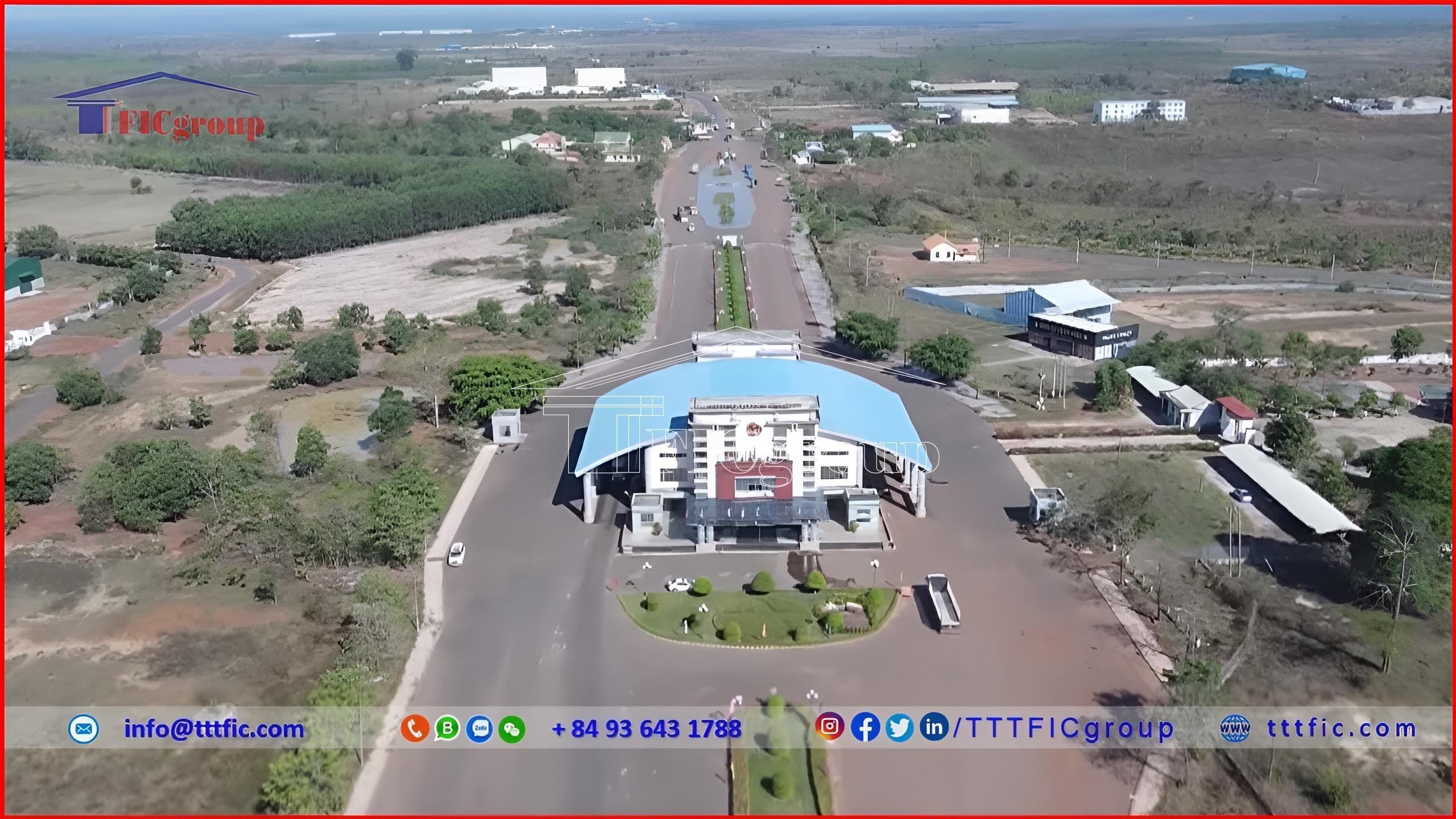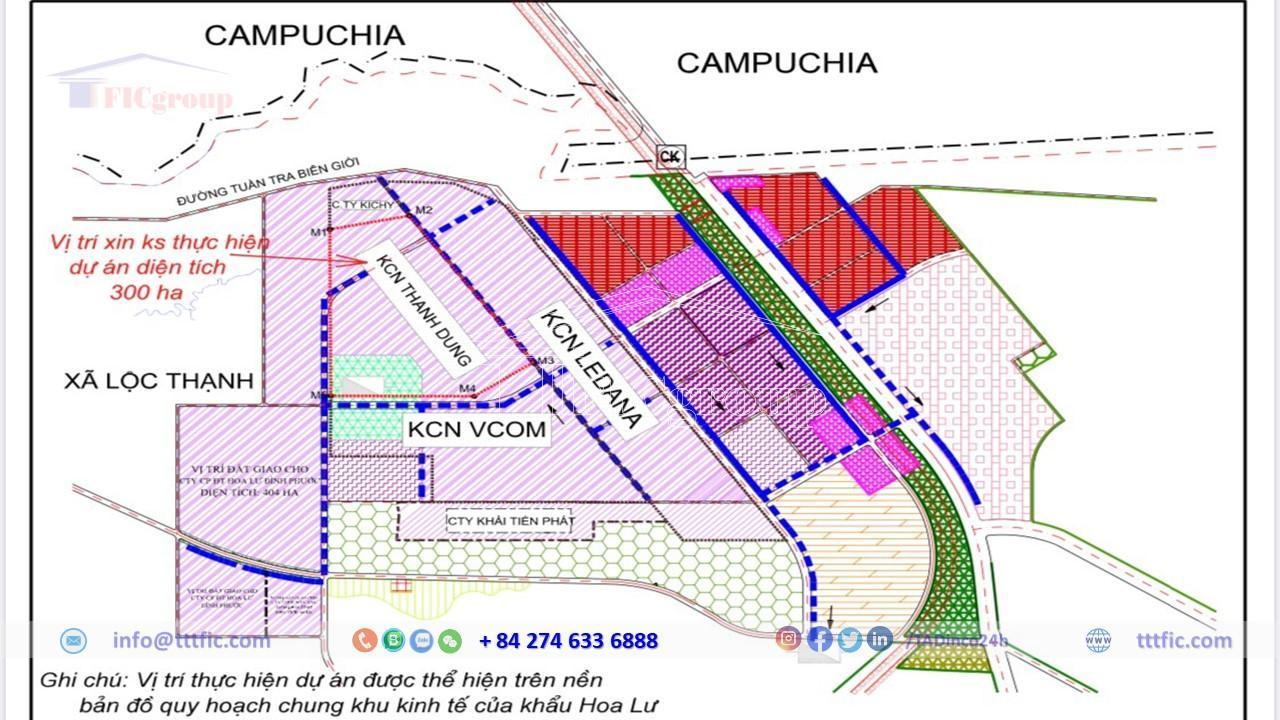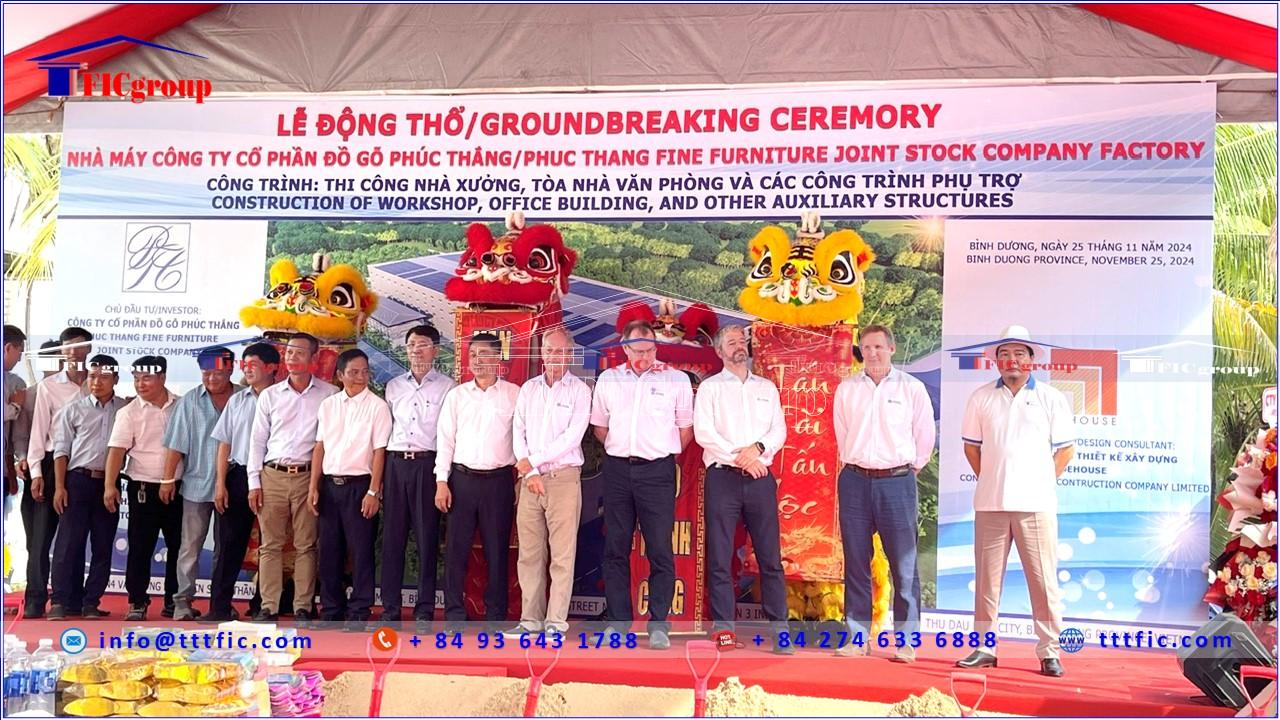
No. FA/WA-19537
Brand-New Industrial Facility for Lease in HCMC
- Price: $4.5/sqm/month
- Area: 90,033.03 SQM
| Information | |
|---|---|
Operating time: 2009 - 2079 | Total Area: 28.364 Ha |
Infrastructure investors: Hoa Lu Binh Phuoc Investment Joint Stock Company. | Price: 25 USD/m² |
Building density: Updating | Occupancy: Updating |
Address: Loc Ninh district, Binh Phuoc Province, Viet Nam | |
With its strategic location along the trans-Asia route connecting Vietnam with neighboring countries, the Hoa Lu Border Economic Zone, upon commencement of its operations, will serve as a driving force to boost the economic development of Binh Phuoc Province and facilitate trade activities between Vietnam and Cambodia.
Hoa Lu Border Gate Economic Zone was established according to the Decision No. 03/2005/QD-TTg on March 5, 2005 by the Prime Minister.
The development of the Hoa Lu Border Economic Zone is based on major transportation routes, including National Highway 13 and the Xuyen A railway, connecting the three countries of Indochina and Thailand conveniently.
On January 13, 2010, the Prime Minister signed Decision No. 61/QD-TTg, approving the master plan for the construction of the Hoa Lu Border Economic Zone.
With the aim of developing the Hoa Lu Border Economic Zone into an attractive investment area, since mid-2019, the People’s Committee of Binh Phuoc province has focused on investing in improving transportation infrastructure connecting the Hoa Lu Border Economic Zone with Cambodia and the key economic areas of the Southeast and Ho Chi Minh City.
One notable project is the Hoa Lu Inland Container Depot (ICD). The ICD spans an area of 25 hectares and has a capacity of 600.000 – 900.000 containers per year. It functions as a central hub for containerized imports from Cambodia, Laos, and Thailand to Vietnam. Additionally, it facilitates exports from Vietnam to various countries.
In September 2020, Binh Phuoc province upgraded and expanded National Highway 13. The project covered a distance of 12,5 kilometers, from Loc Tan junction in Loc Ninh district to Hoa Lu International Border Gate. The investment capital for this project amounted to 450 billion VND. The primary goal was to enhance trade connectivity with Cambodia and neighboring regions. The project aimed to unlock the full potential of the Hoa Lu Border Economic Zone.
– The Hoa Lu Border Economic Zone has attracted 83 investors to implement various projects, covering a total area of approximately 1.719 hectares, of which 38 enterprises are currently operating.
– Among them, 3 investors have been allocated land for infrastructure investment in industrial zones, occupying 1.129 hectares, and 8 secondary investors hold approximately 590 hectares.
– In 2020, the Economic Zone Management Board granted investment certificates for a total of 26 secondary projects. These included 4 foreign projects with a combined investment capital of 6,66 million USD. Additionally, there were 22 domestic projects with a total investment capital of 995,77 billion VND.
– Prominent are 2 industrial park projects with a total area of 773 ha:
– In December 2020, the export turnover through the Hoa Lu Border Gate amounted to 48,15 million USD. This represented a significant increase of 60,2% compared to the same period. Throughout the 11-month period, the import turnover through the border gate reached 147,58 million USD. This marked a remarkable increase of 13,68% compared to the same period. The imported goods included granite, natural rubber, and bottled oil.
– The Hoa Lu Border Economic Zone contributed 556,58 billion VND to the provincial budget. This marked a remarkable growth of 21,17% compared to the same period in 2019. The contribution has played a significant role in the stable growth of the province’s budget revenue.
Hoa Lu border gate economic zone includes communes: Loc Thai, Loc Tan, Loc Hoa, Loc Thanh (separated from Loc Tan commune) and Loc Ninh town in Loc Ninh district, Binh Phuoc province, Viet Nam.
The natural area of the Hoa Lu Border Economic Zone is 28.364 hectares, with the following boundaries:
– The northern border adjoins the Vietnam-Cambodia border.
– The southern border adjoins Loc Thanh and Loc Hung communes.
– The eastern border adjoins Loc An, Loc Thuan, Loc Dien, Loc Khanh, and Loc Hiep communes.
– The western border adjoins the Vietnam-Cambodia border.
The orientation of the development of the Hoa Lu Border Economic Zone encompasses socio-economic relations with the key economic region in the South, Ho Chi Minh City, the whole country, the region, and internationally.
The Hoa Lu Border Economic Zone will become an international border economic zone between Vietnam and Cambodia. It will serve as a hub for economic, trade, tourism, and service development, an important transportation center, and holds strategic significance in terms of security and defense.

Out-of-town traffic:
Internal traffic:

Water demand:
Firefighting water supply:
The electricity demand in 2015 is 37,5 million kWh/year, and in 2025, it is projected to reach 150 million kWh/year.
Power supply sources:
The structure of industries and sectors attracting investment mainly focuses on the following areas: Manufacturing and assembling electronic components, producing supportive industrial products, clothing manufacturing, woodworking, textile and garment support industry, and the footwear and leather industry. In recent years, and in the upcoming trends, the processed poultry and pork products sector has emerged as a new and promising industry expected to significantly contribute to the province’s growth.
Corporate income tax incentives:
– A tax rate of 10% is applied for a period of 15 years from the start of business operation. After the expiration of this period, corporate income tax is paid according to the tax rate specified in the Corporate Income Tax Law.
– Exemption from tax for 4 years from the first taxable income and a 50% reduction in tax payment for the subsequent 9 years. The tax exemption and reduction are determined based on the appropriate tax calculation period. The tax exemption and reduction start from the first tax calculation period when the business generates taxable income. The calculation is continuous without any interruptions or breaks in between the tax periods.
Land rental incentives:
Import tax exemption and reduction incentives:
Visa and immigration incentives:
Other incentives:
TTTFIC Group: Guide to Industrial Real Estate in Vietnam

Industrial real estate in industrial zones, Vietnam
TTTFIC Group
Address: No.290, Dong Khoi Street, Binh Duong Ward, Ho Chi Minh City, Vietnam.
https://tttfic.com
https://tttland.vn
https://24hbdfic.com
https://ttic.vip
https://247bdipss.com
Table of contents
0 customer reviews
1
0%0 review
2
0%0 review
3
0%0 review
4
0%0 review
5
0%0 review

No. FA/WA-19537

No. LAND-18525

No. FACT-14884

No. FA/WA-19329









